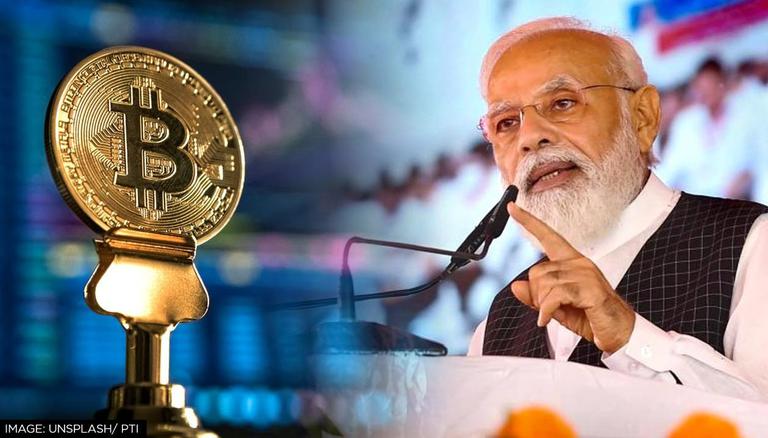India’s Crypto Boom: Navigating Growth, Taxation, and Regulatory Challenges
June 5, 2025 – India’s cryptocurrency market is a paradox of explosive growth and regulatory friction. With an estimated 110–115 million crypto investors and traders—approximately 15% of the population aged 18–60—India ranks among the world’s top crypto adopters, according to Chainalysis and KuCoin reports. Despite this, stringent taxation policies and regulatory ambiguity have cast a shadow over the sector, driving some traders offshore and prompting concerns about brain drain. This article delves into the current state of India’s crypto landscape, its growth trajectory, the impact of government policies, and the challenges and opportunities ahead.
A Thriving Crypto Ecosystem
India’s crypto market is fueled by a young, tech-savvy demographic, with 39–40% of investors aged 18–30, per 2022 surveys. The country’s digital economy, bolstered by widespread smartphone penetration and government initiatives like Digital India, has created fertile ground for crypto adoption. Trading volumes on major Indian exchanges like WazirX, CoinDCX, and ZebPay reached $584 million in March 2024, with a two-fold surge to $1.9 billion in the October–December 2024 quarter, driven by global crypto price rallies and retail enthusiasm.
Market projections are bullish:
- Forbes India estimates a Compound Annual Growth Rate (CAGR) of 54.11% for the crypto market from 2024 to 2032, driven by increasing acceptance and the rise of crypto startups.
- A Coinpedia report projects growth from $2.6 billion in 2024 to $13.9 billion by 2033 at a CAGR of 18.48%.
- Another source forecasts the market to reach $15 billion by 2035 at a CAGR of 18.5%.
Smaller cities are emerging as crypto hubs, with grassroots curiosity and retail trading driving volumes. 56% of young investors view crypto as the future of finance, per industry surveys, reflecting optimism despite regulatory hurdles.
The Tax Burden: A Double-Edged Sword
India’s crypto taxation regime, introduced on April 1, 2022, has been a game-changer—but not always for the better. The government imposed:
- A 30% tax on crypto gains (plus surcharges and a 4% cess), treating virtual digital assets (VDAs) similarly to speculative activities like gambling.
- A 1% Tax Deducted at Source (TDS) on transactions above ₹50,000 (or ₹10,000 for some taxpayers), creating liquidity challenges for frequent traders.
- No provisions for offsetting losses against other income or deducting infrastructure costs (e.g., mining), making the tax structure particularly punitive.
The impact has been stark:
- CoinGecko reported a 56.8% average decline in trading volumes on Indian exchanges post-taxation.
- Posts on X suggest 90–97% of trading volume has shifted to offshore platforms, as traders seek to bypass the 1% TDS and high capital gains tax.
- The government lost an estimated $420 million in revenue due to approximately 5 million traders moving to international exchanges since July 2022, according to Forbes.
The 1% TDS, in particular, has been a pain point for day traders, reducing available capital with every transaction. Many have shifted to long-term holding to minimize tax liabilities. Critics argue the tax regime stifles innovation and discourages new entrants, with some likening the 30% rate to a “crypto gambling tax.” However, supporters see it as a step toward legitimizing the industry, bringing it under the regulatory fold.
Regulatory Ambiguity and Compliance
India’s regulatory stance on crypto remains a work in progress. Cryptocurrencies are not legal tender, and the Reserve Bank of India (RBI) has historically been cautious, citing risks like money laundering and financial instability. The Cryptocurrency and Regulation of Official Digital Currency Bill, 2021, initially proposed a blanket ban on private cryptocurrencies but has since softened into a regulatory framework still under discussion. A consultation paper expected in September 2024 has been delayed, leaving the industry in limbo.
Key regulatory developments include:
- The Supreme Court’s 2020 decision to lift the RBI’s 2018 banking ban on crypto exchanges, which spurred market growth.
- The inclusion of crypto exchanges under the Prevention of Money Laundering Act (PMLA), mandating Know Your Customer (KYC) protocols and reporting to the Financial Intelligence Unit (FIU-IND).
- Investors must report crypto gains in the Schedule VDA of their income tax returns, with penalties for non-compliance ranging from fines to imprisonment (3 months to 7 years for TDS violations).
The lack of a clear licensing regime for crypto operators continues to create uncertainty, pushing some businesses to consider crypto-friendlier jurisdictions like Dubai or Singapore.
Brain Drain and Offshore Migration
While precise data on emigration due to crypto regulations is scarce, the impact is evident:
- Forbes reports that 5 million traders have shifted to offshore platforms since the 1% TDS was introduced, contributing to the $420 million revenue loss.
- Posts on X claim 43 millionaires, including crypto investors and entrepreneurs, are expected to leave India in 2024, partly due to the harsh tax environment. This figure includes non-crypto-related emigration, but the sentiment reflects broader dissatisfaction.
- The Web3 talent pool is reportedly shrinking, with developers and blockchain entrepreneurs relocating to countries with clearer regulations and lower taxes.
The regulatory and tax environment has sparked a “crypto brain drain,” with startups and talent eyeing jurisdictions that offer better incentives. However, the exact number of individuals leaving India solely due to crypto regulations remains anecdotal, as no comprehensive studies have quantified this trend.
Challenges and Barriers to Adoption
Despite its growth, India’s crypto market faces significant hurdles:
- Security Concerns: 26% of investors worry about exchange hacks, and 23% fear losing funds, per industry surveys.
- Regulatory Uncertainty: 33% of potential investors cite unclear regulations as a barrier to entry.
- Tax Complexity: The inability to offset losses and the high tax burden deter new traders, particularly retail investors with limited capital.
- Public Perception: Some still view crypto as speculative or risky, partly due to the government’s cautious stance and high-profile scams in the past.
The Road Ahead: Optimism Amid Uncertainty
Despite challenges, India’s crypto market shows resilience. The country’s #1 global ranking in crypto adoption (Chainalysis) underscores its potential as a blockchain hub. Recent developments suggest a shift toward pragmatic regulation:
- Weekly policy discussions between the government and industry stakeholders, as noted in Financial Times posts on X, hint at possible tax reforms or rate reductions.
- The G20’s focus on global crypto regulation, with India’s leadership in 2023, has pushed for a balanced approach to oversight without stifling innovation.
- The rise of Web3 startups and blockchain use cases in finance, gaming, and supply chain management signals growing mainstream acceptance.
Investors and exchanges are adapting to the tax regime by improving compliance and exploring decentralized finance (DeFi) solutions to mitigate TDS impacts. The SuperGrok subscription on grok.com and higher usage quotas for subscribed X users provide tools for traders to stay informed, though Grok 3.5 remains unavailable, and BigBrain mode is not accessible to the public.
Conclusion: A Balancing Act
India’s crypto market is at a crossroads. With 110–115 million investors, a projected market size of $13.9–15 billion by 2033–2035, and a CAGR of 18.5–54.11%, the potential is undeniable. However, the 30% tax and 1% TDS have driven 5 million traders to offshore platforms, costing the government $420 million in revenue and fueling a potential brain drain. Regulatory clarity and tax reforms could unlock further growth, positioning India as a global crypto leader. For now, investors must navigate a complex landscape, balancing opportunity with compliance.




